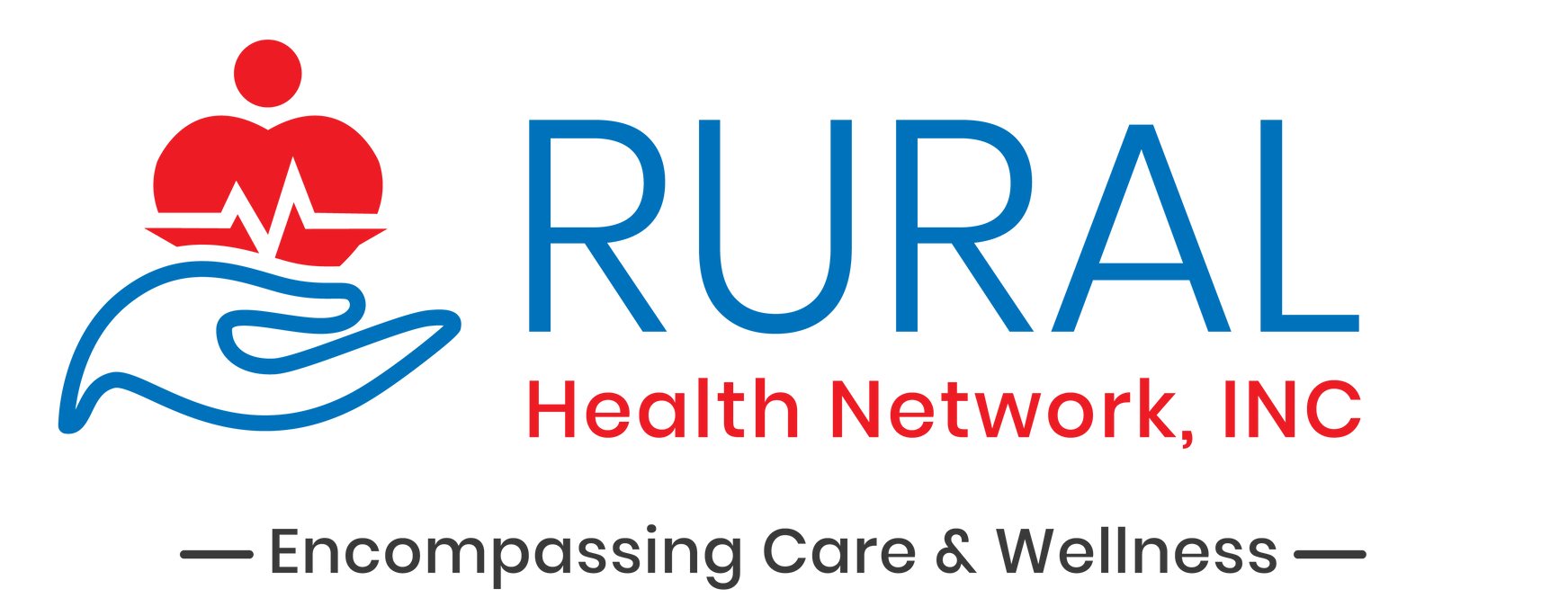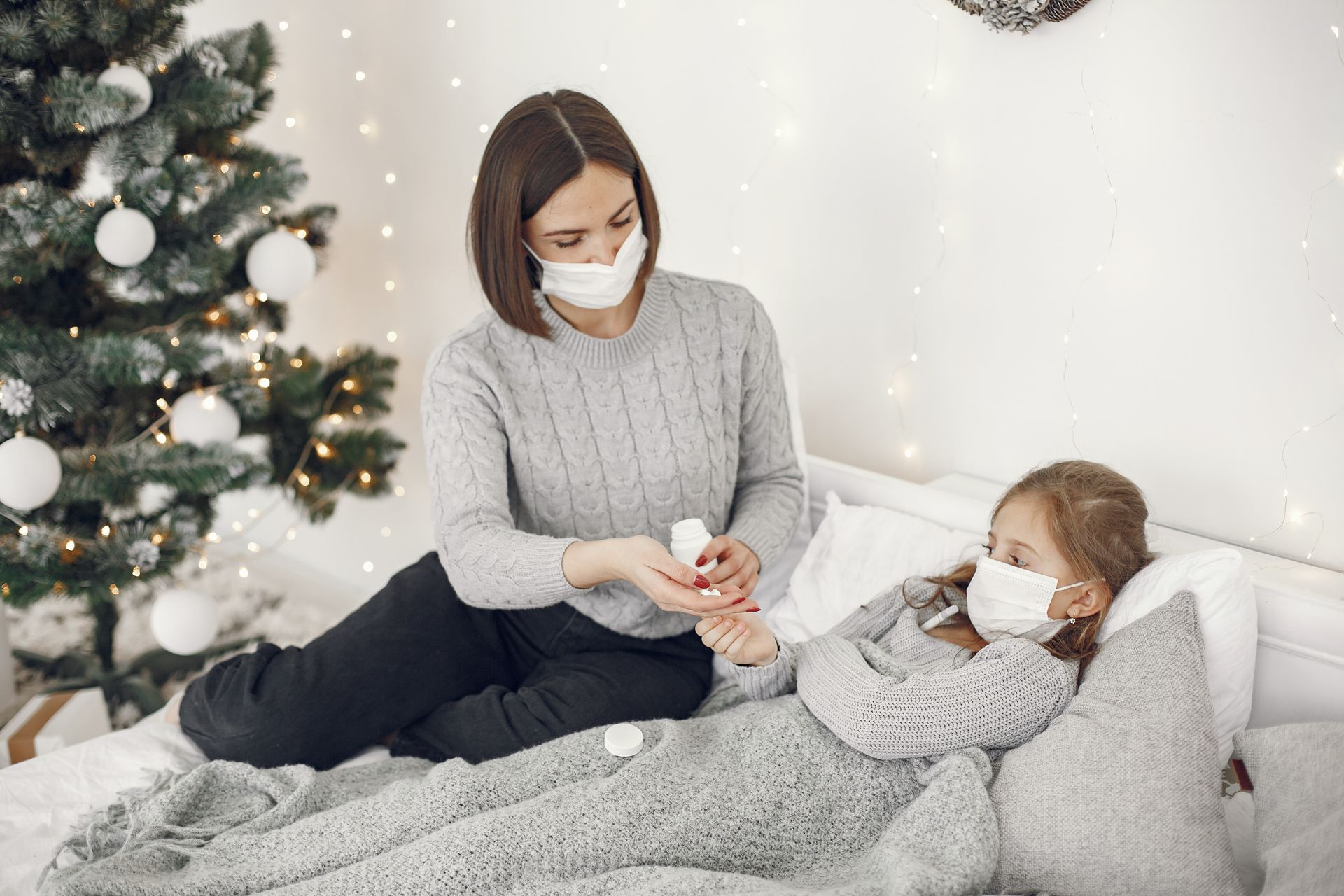What Are the Differences Between RSV and the Flu?

At some point in our lives, we've woken up with a stuffy nose, sore throat, or a fever, wondering, "Is this the flu, a cold, or something else?" This uncertainty leads to worry, especially in households with young children or elderly family members.
Understanding the differences between RSV and the flu is crucial for safeguarding ourselves and our loved ones. By recognizing the symptoms and knowing when to consult a healthcare professional, we can make informed decisions about treatment and preventive measures.
The Difference Between the Flu and RSV
Respiratory syncytial virus (RSV) is a common virus affecting the lungs and respiratory tract, with infants and young children being especially vulnerable. RSV infections are usually mild, but in some cases, they can worsen into serious conditions like pneumonia and bronchiolitis if not treated.
Flu, caused by the influenza virus, targets the upper and lower respiratory tracts and can infect individuals of any age. Its symptoms—runny nose, fever, and sore throat—vary from mild to severe and often appear suddenly.
Both respiratory viruses are highly contagious, and knowing the difference between RSV and the flu aids in better diagnosis, treatment, and prevention. Here's a more detailed comparison:
- Transmission: Both spread through respiratory droplets, but RSV can also spread through direct contact with a contaminated surface.
- Risk Groups: Both pose the most significant risk to young children, the elderly, pregnant women, and those with compromised immune systems, but RSV is particularly dangerous for infants.
- Seasonality: Both peak in colder months, though the flu has a more consistent season.
- Complications: The flu may lead to serious complications, including bronchitis, sinus infections, pneumonia, and worsening of chronic medical conditions. RSV can be particularly severe in infants and young children, leading to bronchiolitis and pneumonia.
- Diagnosis: Healthcare providers diagnose RSV and the flu by checking the patient's symptoms and conducting specific diagnostic tests. They commonly use rapid antigen detection tests for both conditions, providing results within minutes. However, for greater accuracy, polymerase chain reaction (PCR) tests for RSV are preferred.
RSV vs. Flu Symptoms
While RSV and the flu share common respiratory symptoms, key differences exist. RSV symptoms often include wheezing and difficulty breathing, particularly in young children and infants. Conversely, the flu is more likely to cause high fever, severe muscle aches, and fatigue. This table gives you a quick overview of RSV and flu symptoms.

How to Prevent RSV and the Flu
Preventing the spread of these respiratory viruses is crucial, especially during peak seasons when they are most prevalent. Here are a few tips to minimize the risk of infection and transmission of RSV and flu.
- Stay home if you are experiencing symptoms of RSV or the flu.
- Maintain good hygiene, including frequent handwashing using antibacterial soap and water. Use an alcohol-based hand sanitizer when soap and water are not available.
- Cover your nose and mouth with a tissue or your elbow if you cough or sneeze.
- Regularly clean and disinfect frequently touched surfaces and objects, such as doorknobs, light switches, and personal devices.
- Ensure good ventilation in living and working spaces to help reduce the concentration of airborne viruses.
- Consider wearing masks in crowded places during peak seasons.
- Follow your doctors’ vaccine recommendations:
- Flu: Everyone six months and older should get a flu shot yearly. It's particularly crucial for high-risk groups, including pregnant women, children, older adults, and those with chronic health conditions. The flu virus is known for its ability to change over time, which is why the flu vaccine is updated annually to combat the most current strains.
- RSV: No vaccine is available for the general public to prevent RSV infection, but research is ongoing. For high-risk infants, a monoclonal antibody (palivizumab) can be given to help prevent severe RSV illness.
RSV vs Flu Treatment Options
Treatment focuses on relieving symptoms, preventing complications, and supporting the body's natural recovery process. Here are the standard treatment options for influenza and RSV.
- Rest: Your body needs adequate rest to fight viruses. Encourage patients to get plenty of sleep and avoid exertion.
- Hydration: Stay well-hydrated to prevent dehydration caused by fever, sweating, and decreased fluid intake during illness. Water, electrolyte solutions, and broths are good choices.
- Fever and Pain Management: Over-the-counter (OTC) medications such as acetaminophen (Tylenol) or ibuprofen (Advil, Motrin) reduce fever and alleviate pain. Use these medicines according to the label instructions or a healthcare provider's guidance.
- Humidifiers: A cool-mist humidifier adds moisture to the air, relieving congestion and coughing. Ensure the humidifier is clean to prevent the growth of mold or bacteria.
- Cough Remedies: OTC cough syrups or throat lozenges may provide relief for cough.
- Nasal Decongestants: Nasal decongestants, available in oral forms or as nasal sprays, can relieve a stuffy nose. You should, however, avoid the long-term use of nasal spray decongestants to prevent rebound congestion.
Specific Treatments for RSV
While there's no specific antiviral treatment for RSV, managing symptoms and preventing complications are the mainstays of treatment. In more severe cases, especially in infants and young children, hospitalization may be necessary to provide:
- Oxygen Therapy: This therapy supports breathing in cases of severe respiratory distress.
- Intravenous (IV) Fluids: if the patient cannot maintain adequate fluid intake orally, IV fluid ensures hydration.
- Nebulized Medication: In some cases, healthcare providers can administer medication via a nebulizer to help open airways.
Antiviral Medications for Flu
Antiviral drugs are essential to flu treatment, especially for those at high risk of complications. These medicines lessen the severity of symptoms if taken within 48 hours of symptom onset. Examples of flu medications include:
- Oseltamivir (Tamiflu)
- Zanamivir (Relenza)
- Peramivir (Rapivab)
Prevention of Secondary Infections
RSV and the flu can weaken the body's defenses, making it more likely to contract secondary bacterial infections, such as pneumonia. In such cases, doctors may prescribe antibiotics to treat the secondary infection, not the viral one.
FAQs
1. When is the flu and RSV season?
In the United States, flu season typically peaks between December and February, but it can begin as early as October and continue into May. RSV season usually falls around the same time, often starting in the fall and ending in the spring.
2. Does RSV always have a fever?
Not necessarily. While fever is a common symptom of RSV, especially in infants and young children, it's not always present. The absence of fever does not rule out RSV, especially if other symptoms like coughing, wheezing, or difficulty breathing are present.
3. When to seek medical attention?
Seek medical attention if you observe severe symptoms such as difficulty breathing, persistent high fever, or signs of dehydration. High-risk individuals should consult their healthcare provider at the first sign of symptoms to discuss potential treatment options.
4. Is it too late to get the flu vaccine if the season has already started?
No, it's not too late. The CDC recommends vaccinating against influenza as long as the flu virus is circulating. Even if you have missed the beginning of the flu season, getting vaccinated still protects you for the remainder of the season.
5. Can you have RSV and the flu at the same time?
Although relatively rare, it's possible to be infected with both RSV and the flu simultaneously. Co-infection complicates symptoms and treatment, making it especially important to seek medical advice if you experience severe or prolonged symptoms.
6. How long do RSV and flu symptoms last?
RSV symptoms typically last about 1–2 weeks, though in severe cases, symptoms might last longer and require medical attention. Flu symptoms usually improve over 2–5 days, but feeling run down for a week or more is common.
Guard Your Family Against Flu and RSV
As the seasons change, staying informed about RSV and the flu is crucial. Understanding their differences, symptoms, and prevention strategies empowers us to take charge of our health and those around us. Prevention is vital, whether through vaccination or good hygiene practices.
Rural Health Network, Inc. is here if you need medical guidance and vaccinations to safeguard against the flu. Together, we can keep our families healthy and resilient against these common but manageable illnesses.
For more information, message us online or call (209) 862-3604!










